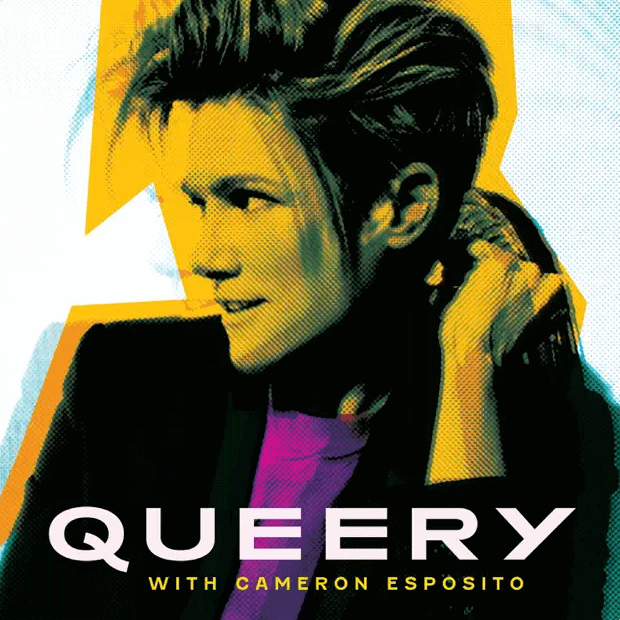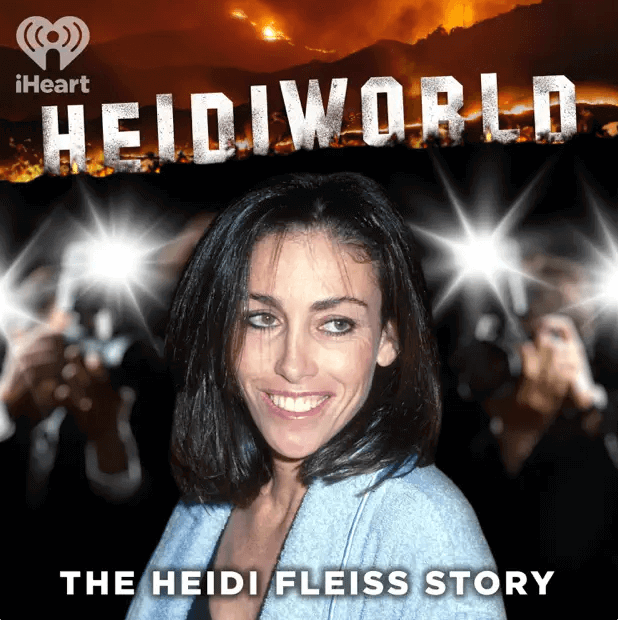If you’ve got a great topic idea for a new podcast, awesome. That’s the hardest thing to come by.
The next step is figuring out how to present it. As anyone who’s listened to podcasts knows, there are lots of different podcast formats out there.
Picking the best format for your own podcast involves several factors, including how much you want to spend on your podcast studio, how you prefer to work, and, of course, your topic.
Why you need to choose a podcast structure early
Podcast success is all about being consistent — not only through good sound production and the content or questions asked in episodes, but also by sticking to one podcast format.
A consistent format sets expectations with listeners. They’ll know whether they’re getting their favorite weekly dose of an interview podcast or scripted story-based podcast. Ultimately, the format can be whatever you want. It’s a vehicle for your content, so go with whatever suits it, even if it’s not a format you’ve heard before.
It helps to think through what podcasts are out there, understand which different formats have proven effective, and consider why they’re easy for listeners to understand quickly.
Here are eight different types of podcasts to inspire your new podcast.
8 different podcast formats to consider for your show
1. Interview podcasts
An interview podcast is exactly what it sounds like: One or more hosts talking to a different guest in every episode. Interview podcasts typically have a core premise or theme that informs the scope and subject of the conversation (e.g. a dating and advice show, where different experts offer their views on relationships).
The interview format is one of the most successful podcast formats because it provides a simple way to keep every podcast episode fresh — each guest brings a new point of view to explore.
There are a lot of great interview podcasts as they’re a common podcast format, maybe even the most popular podcast format. One interview show we like is Queery with Cameron Esposito, in which comedian Cameron Esposito talks weekly with a notable LGTBQ+ guest to explore “individual stories of identity, personality and the shifting cultural matrix around gender, sexuality and civil rights.”

The concept works well because it’s broad enough to include a lot of different guests and perspectives under its umbrella, yet specific enough to shape the scope of each episode — it both targets a specific listener and signals to the listener exactly what they’ll get by listening.
It’s worth noting that interview podcasts have a distinct promotional advantage. Guests can act as unofficial spokespeople for your show, promoting their appearance — and your podcast — on their social channels and to their audience. That said, booking guests and juggling different schedules can be time-consuming.
Pros:
- Chance to learn from and share the expertise of someone on a particular topic
- Exposes your podcast to a new audience via the guest’s promotion channels
Cons:
- Requires research into the guest’s topic and background
- Scheduling a time to record with an expert is tough — and the more popular the guest, the harder it’ll be
- Each guest has different equipment, so there are potential sound quality and recording issues
LEARN: 14 easy ways to find podcast guests (2023)
2. Conversational/co-hosted podcasts
Conversational or roundtable podcasts usually feature an informal conversation between two or more hosts. Often the discussion centers on the core theme of the show, whether it’s a single specific topic (e.g. a show that discusses the history of one specific cocktail each week) or a rundown of many topics (e.g. a show that breaks down the week’s biggest pop culture stories).
Because conversational podcasts express multiple points of view, these shows can appeal to a wider swath of people who may identify more with one host than another. There’s also a certain level of intimacy between the hosts and the listeners in this format, as hosts tend to drop in anecdotes and insights from their personal lives, and open up about their close friendship with one another.
Who? Weekly is a conversational podcast about D-list celebrities known for the litany of inside jokes and coded language shared between hosts Lindsey Webber and Bobby Finger and their listeners.

Take for instance the way Lindsey and Bobby refer to celebrities who elicit either a “Who?” or a “Oh, them!” response when mentioned, depending on whether they’re on the D-list or the A-list. (British singer Rita Ora is known among listeners of the show as the ultimate “Who.”) The show’s loyal fan base loves getting in on the fun — and their common vernacular has helped build an especially dedicated community.
Pros
- Appeals to a wider group of people who may identify more with one host than another.
- Creates a level of intimacy between the hosts and the listeners.
Cons
- Co-hosts need chemistry and familiarity to create engaging content
- Using in-jokes, unknown references, or acronyms can make new listeners feel isolated and out of the loop
3. Solo podcasts
Solo podcasts, sometimes called monologue podcasts, are the most bare-bones podcast format of all, featuring one host talking directly to their listeners without any guests. Solo podcasting can be scripted or unscripted, but the format is often a combination of both, where the host riffs on material from a pre-written outline.
While solo podcasts offer you complete creative freedom and unmatched ease for scheduling (What time works? Hang on, let me ask myself), you’ve got to be pretty charismatic to hold a listener's attention for the length of your episode, let alone over the course of multiple episodes.
If you’re a history buff, one solo podcast you might enjoy is Hardcore History, in which host Dan Carlin orates captivating deep dives into dramatic moments throughout history.

Dan himself is a great storyteller, able to tease an engrossing narrative and unifying themes out of often dense historical topics, which is what makes him a great solo podcaster. Episodes can run to 5+ hours, so get ready.
Pros
- No limitations on topic coverage
- Full flexibility to record episodes in the hosts own leisure
- Stretching engaging stories across multiple episodes will keep listeners coming back for more
Cons
- A single voice for an entire episode can be boring; you need to be charismatic and engaging to keep listeners’ attention
- You need expertise or in-depth research to share about the topic
4. Scripted fiction podcasts
Scripted fiction podcasts are fictional narrative audio stories produced using pre-written material, voice actors, sound effects, and music. A fictional narrative podcast might consist of one serialized story told over the course of an entire season of podcast episodes (similar to a season of TV). Anthology-style fiction podcasts, which tell a single, contained story in each episode, are also everywhere these days.
Fictional podcasts are an increasingly popular podcast format, probably at least in part because you can independently produce your stories for a fraction of the cost of shooting a film. There are also opportunities to sell your script — major podcast production companies now spend lots of resources producing narrative audio fiction, often casting famous voice talent too.
However, if you’re DIYing, you’ll have to pay actors to do the voice work, meaning fiction podcasts can cost more to produce than other formats. (A crowdfunding campaign is a popular option for this). It could also be more difficult to attract casual listeners who may not want to commit to starting a new podcast from the very beginning.
A great example of a scripted fictional podcast is Deadly Manners, which stars LeVar Burton, Kristen Bell, Denis O’Hare, Alisha Boe, and RuPaul. Told over the course of 10 episodes, the comedic murder-mystery centers on a family throwing a dinner party. One by one, the guests are murdered, leaving you wondering who’s to blame.

An interesting sub-genre is the fiction podcast where the host just reads fiction written by someone else. Phoebe Reads a Mystery is a great example, as is LeVar Burton Reads. I love both of those, not that you care.
Pros
- Independently produce your stories for a fraction of the cost of shooting a film
- Flexibility to produce short-story episodic or serial podcasts
Cons
- Finding and hiring voice actors could be a lot of work
- You need a great story that keeps listeners engaged and returning for the next episode
5. Scripted nonfiction podcasts
The scripted nonfiction format consists of pre-written podcasts about true stories — think investigative journalism, deep dives into historical events, and the popular true crime genre. Similar to a scripted fictional show, a scripted nonfiction storytelling podcast might consist of a single story told over multiple podcast episodes, or it might tell a single story from beginning to end in each episode.
If you’re thinking about making a scripted nonfiction podcast, you might be able to sell it to a production company, as a lot of shows in this genre are getting optioned for TV. Examples of popular scripted nonfiction podcasts that later became TV shows include The Dropout, The Shrink Next Door, and WeCrashed.
HeidiWorld: The Heidi Fleiss Story is a scripted nonfiction podcast with a unique take on the format. Host Molly Lambert acts as a solo host, interweaving her own commentary with voice actors playing out a scripted version — based on interviews — of the famous Hollywood madam arrested in the early ’90s and the subsequent media frenzy.

Pros
- Immersive and can pull an audience in
- Flexibility to produce short story episodic or serial podcasts
- Sourcing content from outside events means you don’t need to come up with all of the topics or details (e.g. true crime podcasts).
Cons
- Nonfiction topics require a lot of research ahead of production
- Some topics can be tough to explain without visuals
- Often requires sourcing copyrighted audio clips that need licensing
6. Call-in podcasts
A call-in show takes inspiration from talk radio shows and invites listeners to interact with the podcast host. The host might speak live with callers on the show in real time, respond to questions and calls collected via voicemail, or do a mix of both.
In connecting hosts directly with listeners, call-in shows often have a conversational, spontaneous feel, taking episodes in new and surprising directions. However, callers usually need to be vetted beforehand, to both confirm that they’ll be a good fit for the show and to make sure they have a good phone connection so the recording is audible.
In the call-in podcast Beautiful Stories From Anonymous People, host and comedian Chris Gethard answers one phone call from an anonymous listener each episode. But there’s a twist — no matter what, he can’t hang up first.

The beauty of the show is that it can go in any direction, as it’s guided entirely by the stranger who called in, from murderous spouses to cheating friends to people who just want to reveal their strange obsessions.
Pros
- In connecting hosts directly with listeners, call-in shows often have a conversational, spontaneous feel
Cons
- You need an audience who wants to call in first
- It’s extra work to vet the callers beforehand to make sure they’re right for the show
- Potential sound quality or recording issues from poor guest equipment or bad connection
7. Repurposed content podcasts
Repurposed content podcasts are when the same story that appeared in written content, recorded video, or live programming appears as a recorded podcast. This format works well for businesses and brands that produce large amounts of content and is common in news media.
The process of repurposing existing content provides several benefits, from boosting audience engagement to serving different content across multiple mediums without needing to create fresh, interesting content from scratch. The perk here is that a good story will transcend across all media channels so why not get the most out of it.
The repurposed content podcast The Daily Show: Ears Edition provides extended interview content or deep dives into topics mentioned on the TV format of the daily show.

For example, on the TV show, guest host Kal Penn discusses with Joe Biden how to get young people into politics. Later, the extended interview was available on the Daily Show podcast, making use of content the show had already recorded.
Pros
- The ability to produce content without having to create something from scratch
- You can reach new audiences on several different content channels
Cons
- Not all video or written content makes good audio content, and the fact it wasn’t recorded for a podcast is usually obvious
- If the topic coincides with a timely news moment, the time it takes to repurpose could lose that timeliness
8. Hybrid podcasts
A hybrid podcast is when a podcast splits out of its standard format for one to several episodes. This could be when a co-hosted podcast suddenly becomes a solo show because one host has expertise to deep dive and share on their own, or when a studio-recorded podcast goes on the road for a series of live shows.
It’s fine to experiment within formats and podcasting is a great medium to try that. Remember to ask your podcast listeners for feedback on how they liked it by reaching out to you on social media.
For example, in Tim Ferriss’s podcast, The Tim Ferriss Show, the standard format is long-form interviews with experts often lasting an hour or more. But Tim also does what he calls “in-between-isodes” where he produces a solo podcast that dives deep into something he’s explored and learned in his life as a rapid experimenter.

In the end, the nature of the episode never falls too far from its purpose: to extract insight from experts and provide actionable takeaways for listeners. But in this case, he’s the expert and he’s sharing everything he knows on the topic.
Pros:
- Exercises your creativity as you experiment across formats
- Opportunity to keep podcast listeners engaged with a break from standard programming
Cons:
- Experimenting too far off course could create an inconsistent listening experience and deter regular podcast subscribers
- A new format may require new production skills that take time to learn
What type of podcast will you choose to produce?
Although there’s no one best podcast format, there likely is a best format for your idea. So take into account your overall goals and how your podcast can help you achieve them.
Carefully consider how much work you want to put into your podcast. A discussion format where you and a co-host casually chat about a topic while recording remotely requires less time and energy than a scripted nonfiction podcast that requires a deeply reported investigation into that same topic.
Lastly, remember that podcasting should be fun! So no matter what format you choose, make sure it’s one you’ll enjoy producing on a regular basis.







































